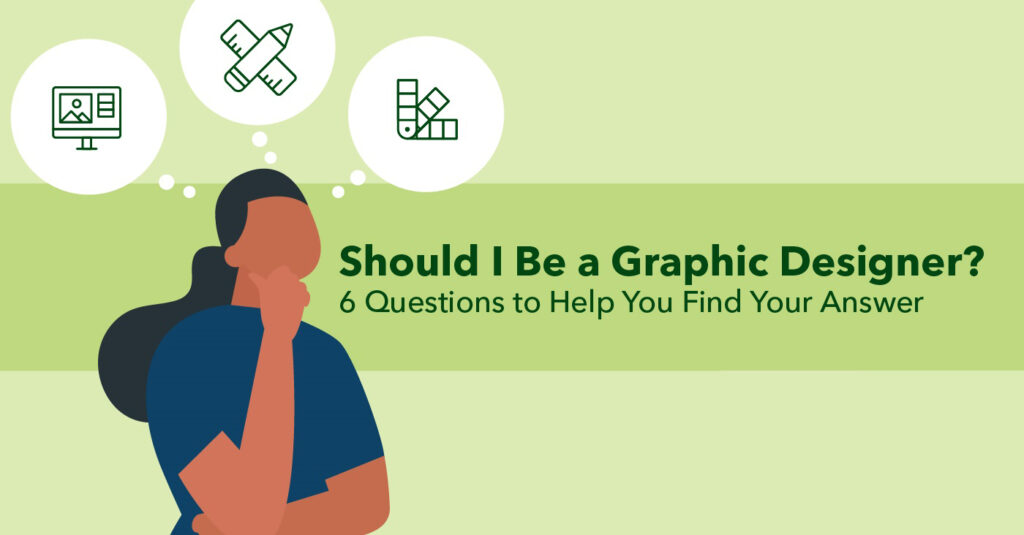
A little introspection goes a long way when considering something as important as pursuing a career. Please consider the following questions.
Should you become a graphic designer? 6 Questions to ask yourself
A little introspection goes a long way when considering something as important as pursuing a career. Could you take the time to consider the following questions?
- Am I versatile?
Graphic designers are often tasked with juggling many different projects at once. This is especially true if you work in an agency setting, representing a handful of other clients or brands. Even in-house designers often work on diverse projects—from website banners and social media images to sales sheets and print catalogs. - Do I embrace change?
The world of graphic design is constantly evolving. New techniques and technologies are introduced yearly, so a commitment to lifelong learning is critical to building a lasting design career.
The exponentially growing and transforming world of technology has an enormous impact on graphic design. Are you excited to learn about the latest features in design software? Do you know about a new technique that will make managing your workload more efficient? If you resist change, consider a different career path. - Am I patient?
Much of a graphic designer’s work comes at the direction of a client or other internal stakeholders. There will rarely be a project where you’re given free creative reign and do not encounter any requests for revisions. You can expect to spend time dealing with hard-to-interpret feedback and clients whose priorities may shift mid-project. - Am I a team player?
It’s that graphic designers spend much of their time working solo as they create new materials, but production time is only a portion of the job. The rest of their work relies heavily on collaboration. Negotiating ideas and concepts with a client and your team members are essential.At any given point in your career, you could collaborate with various developers, work with another designer on a project, or lead a group of fellow designers. This means you’ll need to balance the desires of your clients and coworkers while asserting your own professional opinion on how a project would be most visually appealing. This can be a challenge considering that graphic design is a subjective field. You’ll need a bit of diplomatic tact and a willingness to listen, even if you disagree.
- Can I handle a little criticism?
Speaking of subjectivity, you’ll inevitably come across an opinion that differs from yours. As a graphic designer, you mustn’t take feedback personally. This can be easier said than done—especially if you’ve poured your heart into a project. But in the end, you ultimately need to respect the client’s wishes and work to reach a compromise.As a graphic designer, your ideas and designs will always be out there for others to see—and with that comes criticism. This can be both good and bad. Thoughtful, constructive criticism can lead to professional growth if you accept it. The key is to keep an open mind and take criticism in stride.
- Am I a problem-solver?
The chances are good. You’re used to solving problems in your current job, personal life, or as a parent. Problem-solving will continue in your career as a graphic designer. Your job as a graphic designer is to find the most effective way to achieve the objective.Some requests will be more challenging than others. If you have a mindset that perceives problems as exciting opportunities, you will probably successfully meet your client’s requirements, even if it takes multiple attempts and edits.